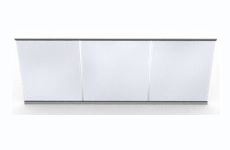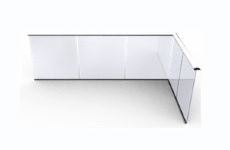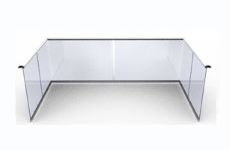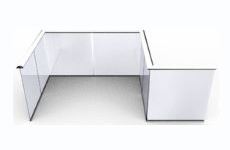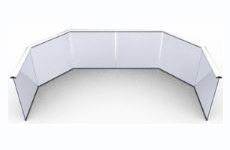Photovoltaic Glass Balustrade
To price your balustrade requirement first choose the shape most similar to yours
Untapped opportunity
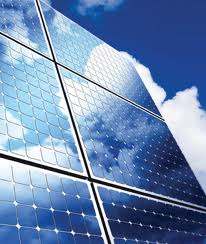
The greatest source of free energy that exists on our Earth is the power of the sun. Many countries harness this power and use it to their advantage.
Other countries do not have the means or the financial resources to invest in the technology. For example, many African countries fall into this category, where the sun shines continually during daylight hours.
Unfortunately, and for various reasons, much of this free energy is currently wasted, and we continue to burn fossil fuels to heat and light our homes and power our electrical appliances.
There is nothing new about this, and photovoltaic (PV) panels are becoming increasingly accessible and more popular than ever. However, a large percentage of PV panels used are additional installations used solely for this purpose, meaning they are not integrated into products that would use glass anyway.
Large expanses of glass on balustrades, balconies, and roof terraces could be a valuable source of solar energy if they were used to house solar panels.
Photovoltaic Glass
Glass is one material that is used throughout the construction of buildings, whether domestic or commercial, and it can be adapted to harness the power of the sun and produce energy for the building. In this instance, we will focus on the use of glass in domestic households, where it is used for windows, balustrades, and roof terraces on balconies, and adapt the glass to enable it to assist in supplying energy to the home.
This is known as photovoltaic glass, which is manufactured in panels and replaces conventional glass while simultaneously harnessing energy from daylight. It is very easy to install. The glass is fitted into conventional glazing systems, usually without the need for system modifications. Electrical connections are straightforward, and the glazing subcontractor can typically handle the interconnection of the modules (connecting the power to the building's electricity supply or to the grid should be undertaken by an accredited PV installer).
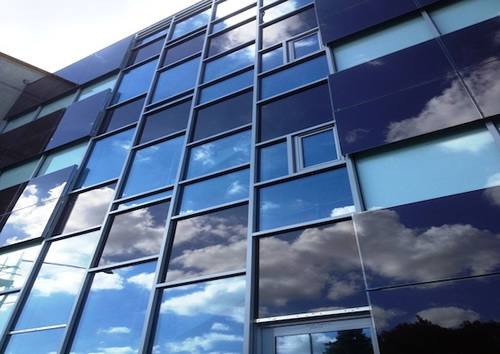
The initial cost of the solar installation is offset during construction, and the electricity produced continues to lower costs during the building's lifetime. The density of the PV cells can be specified for each individual installation, thereby optimizing the amount of natural light (or shade) within the building's interior. By strategically placing the panels, it will enhance the building's visual appeal, and its multifunctionality meets specifications for light transmission, solar shading, electrical output, and insulation.
The PV cells are crystalline wafers made from semiconductor-grade silicon, measuring only approximately 200 microns in thickness. They are available in two standard sizes: 125mm x 125mm (5" square) or 156mm x 156mm (6" square). The spacing between the cells can be varied in both directions to meet customer requirements.
The electrical wiring system is designed to fit into traditional glazing systems, and electrical contact is made through simple plug and socket connectors. The electrical contact busbars can generally be placed either horizontally or vertically for optimum aesthetic appeal. Panels can be single-glazed or double-glazed units, which, like ordinary glass, can incorporate low emissivity glass to enhance insulation.
Where there is light there is power
It is a common misconception that PV only works in sunny climates. This is not the case. PV converts light into power, and even relatively low levels of light are highly effective at producing power. South-facing glass panels can significantly contribute to this. Transparent photovoltaic-glass windows can generate 80 to 250 watts of electricity. This represents the next generation of BIPV (building-integrated photovoltaic) technology—a fully integrated, multi-tier PV and heat insulation system within an enclosed, super-tempered glass window.
Some glass manufacturers are also exploring embedded smart home technologies, including an optional built-in electrical privacy curtain to completely block out an already shaded glass window. There is also new technology that converts the entire window into a light panel.
Use of photovoltaic glass on Balconies and roof terraces
Where is it better to apply PV (photovoltaic) glass than on balconies or roof terraces?
Most PV installations nowadays are applied as foreign objects or additions to the structure. Using PV glass panels in place of regular clear glass for areas that already require glass is a natural progression. Balconies, roof terraces, and glass facades all qualify for this.
Glass balconies are designed to bask in the sun, and roof terrace balustrades often have the advantage of having the glass exposed on both sides to the sun, effectively doubling their output. PV balconies or balustrades that incorporate photovoltaic glass represent an emerging source of green energy.
Planning, local authorities and building control
Green energy, zero-carbon homes, and PV all deserve 'gold stars' when dealing with or approaching local authorities. Stringent government directives have been issued to encourage, reward, and support the construction industry, developers, and home builders in incorporating green energy into their buildings. The application and use of photovoltaic panels will, in most cases, pave the way for greater flexibility, incentives, and, in general, a positive outcome for all parties involved. The government achieves steady progress toward reducing the carbon footprint, developers gain more square footage, and the end-user enjoys a lower electricity bill.
Recently, a project in London was granted an additional three floors as a result of using PV panels on the balconies, roof, and one of the facades.
Unlimited supply of energy
The 89,000 TW of sunlight reaching the Earth's surface is abundant—almost 6,000 times more than the 15 TW equivalent of average power consumed by humans. Additionally, solar electric generation has the highest power density (with a global mean of 170 W/m²) among renewable energy sources.
Pollution free
Solar power is pollution-free during use. Production end-wastes and emissions are manageable using existing pollution controls. End-of-use recycling technologies are under development, and policies are being formulated to encourage recycling by producers.
PV installations can operate for many years with minimal maintenance or intervention after their initial setup. Therefore, after the initial capital cost of constructing any solar power plant, operating costs are extremely low compared to existing power technologies.
An increasing and enticing investment
As of 2011, the price of PV modules per MW has dropped by 60 percent since the summer of 2008, placing solar power on a competitive footing with the retail price of electricity in numerous sunny countries for the first time. Fierce competition has occurred in the supply chain, and further improvements in the levelised cost of energy for solar are anticipated, presenting an increasing challenge to the dominance of fossil fuel generation sources in the coming years.
Over time, renewable energy technologies generally become more affordable, while fossil fuels typically become more expensive. The lower the cost of solar power, the more favourably it compares to conventional power, making it more appealing to utilities and energy users worldwide. Utility-scale solar power can now be delivered at prices well below £61/MWh (0.06 pence/kWh), even less than most other peak generators, including those running on low-cost natural gas. The reduced cost of solar modules also stimulates demand in consumer markets where solar's cost compares very favourably to retail electricity rates.
Summary
As some fossil resources approach their peak levels, extensive research is being conducted on harnessing the sun's rays to serve as the primary source of energy for both households and businesses. With older buildings making way for modern structures characterized by a larger proportion of glass in their exterior design, the use of photovoltaic glass becomes the preferred choice for homeowners. This choice not only enhances the aesthetic appeal of the home but also allows residents to generate their own energy, reducing their reliance on the national grid for powering household appliances.
In contemporary homes, extensive glass areas are commonly found on balustrades, balconies, and roof terraces. These areas present a valuable opportunity for collecting solar energy. By installing a solar energy system in the house, a significant return on investment can be achieved by replacing existing toughened glass with photovoltaic panels.
Local authorities often prioritize and grant additional planning consent for 'green applications.' They allow the installation of solar energy-capable roof terraces in cases that might not typically receive approval. For instance, if a planning application is submitted to add an extra floor to the building to accommodate solar energy collection, it is more likely to be approved.
It is a common misconception that balconies or terraces not facing south, and thus receiving less direct sunlight, are not economically suitable for solar power conversion. However, the sun's energy can be harnessed from both direct and indirect rays. Therefore, valuable energy gains can be achieved by replacing existing glass with photovoltaic panels, making these installations a valuable addition to the overall energy collection system.
